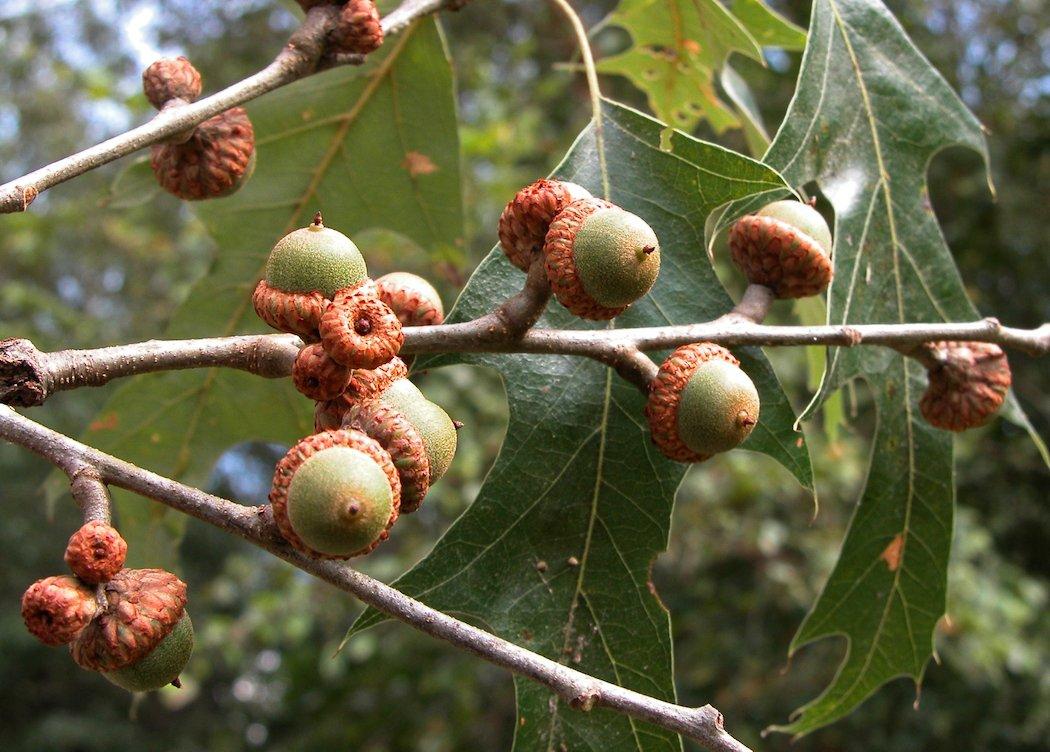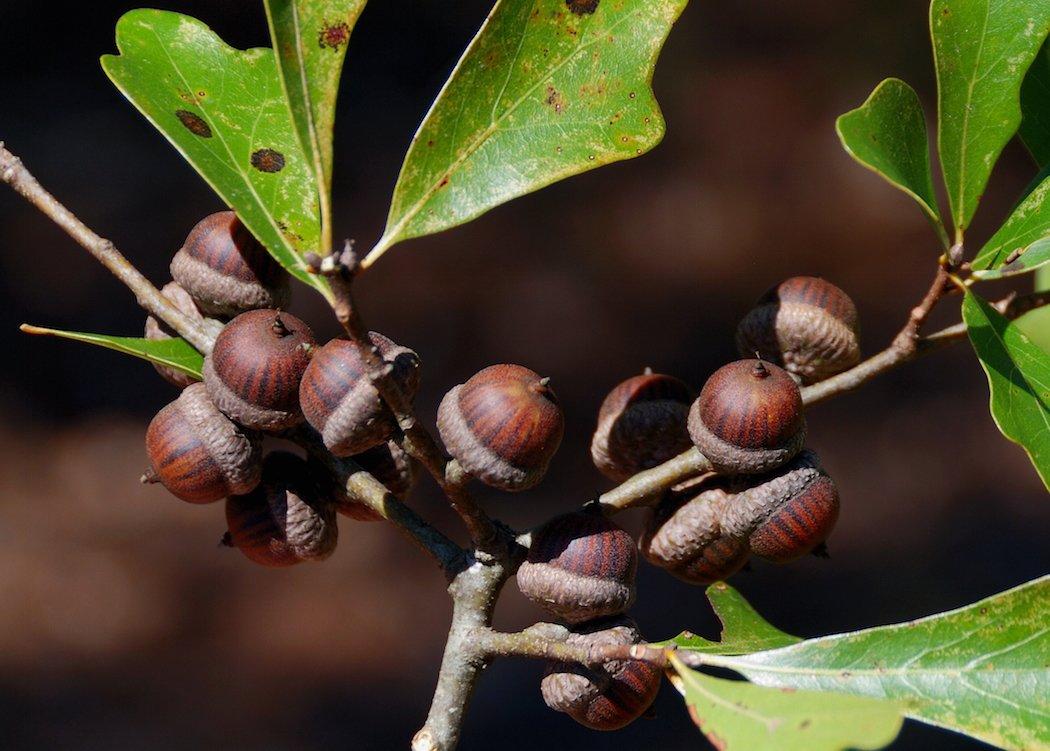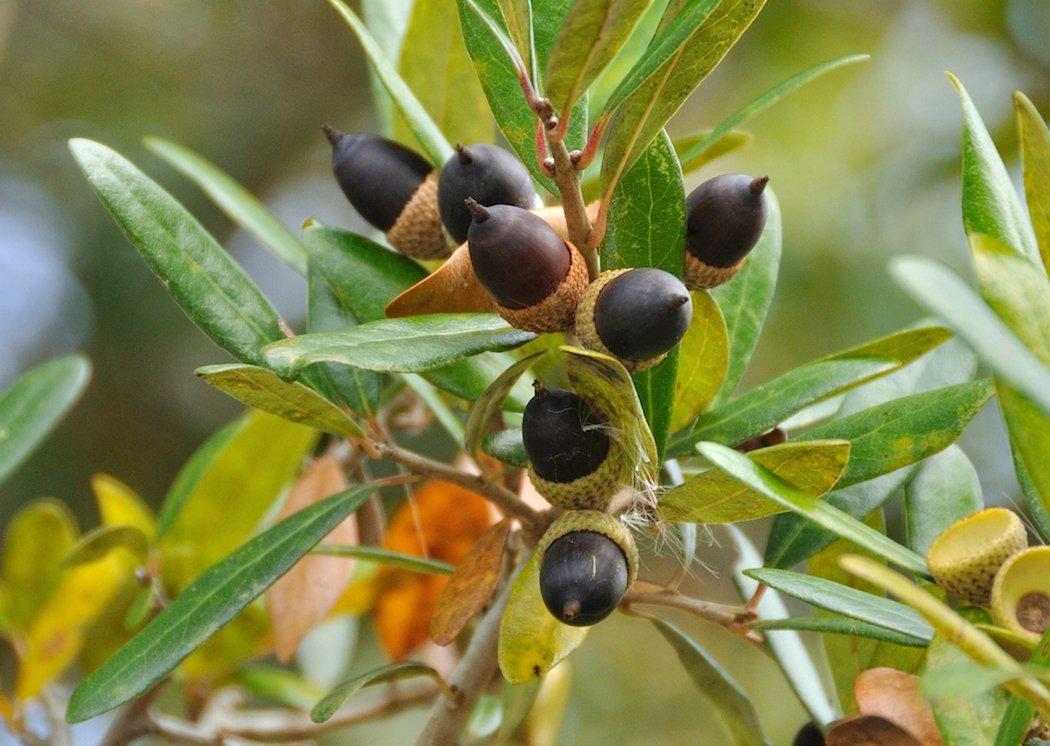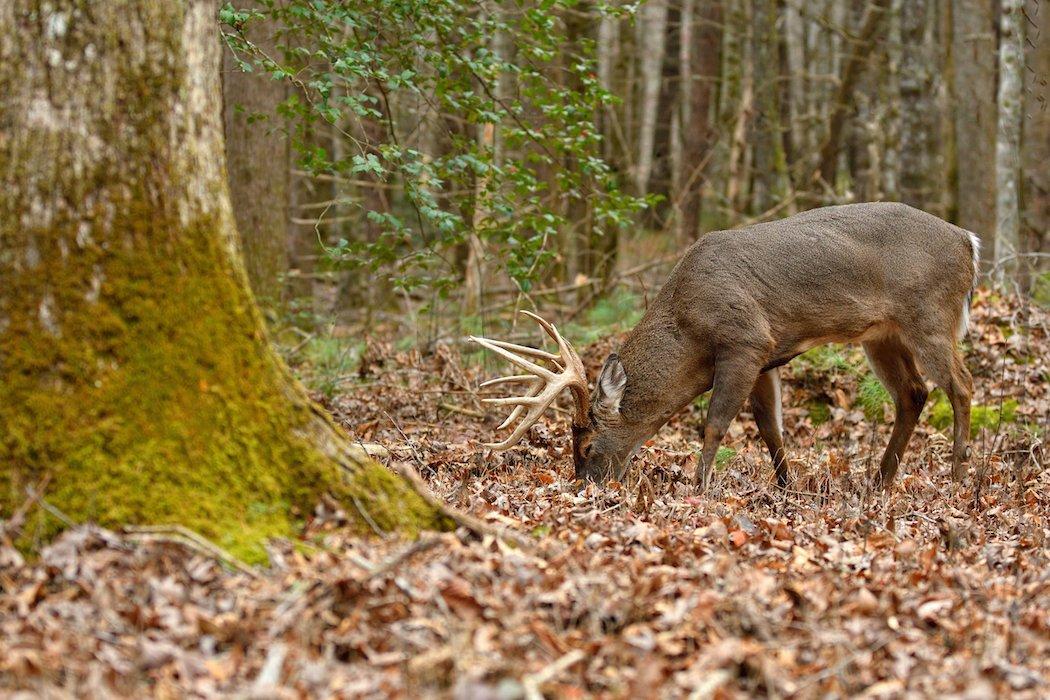Can You Identify Different Types?
The basic elements for a successful deer hunt are: know where the deer are bedding, know what they're eating, play the wind, be there and shoot them somewhere along that line of travel. Fall deer hunting, particularly in the South, often occurs over cultivated, highly nutritious food plots. There's nothing wrong with the strategy. However, when food plots are as empty as a ghost town, deer are obviously being drawn to more attractive forage. Where oak trees grow, it's a good bet the local deer herd is busy gobbling up one of Mother Nature's tastiest fall foods — acorns. Deer are attracted to acorns for their nutritional value, abundance and size. Acorns are rich in nutrients. Percentages vary from species to species, however, all acorns contain substantial amounts of protein, carbohydrates and fats, as well as the minerals calcium, phosphorus and potassium and the vitamin — niacin.
Oak and Acorn Facts

Although acorns are low in protein content, (6 percent), they're high in carbohydrates, (42 percent) and fats (52 percent). They are easily digested, their nutrients readily absorbed, and they are processed and passed through a deer's body quickly. Because deer digest acorns so easily, they eat lots of them each day and the sheer numbers eaten by individual deer provide the protein needed for healthy deer.
Don't Miss: 10 Trees That Will Hold Deer on Your Hunting Property
Typically, in any given year within an area, there will be one species of oak that produces well. Water oaks produce, to some extent, annually, but rarely do all species produce bumper crops in the same year. Acorns are a preferred deer food source in the eastern states and constitute up to 25 percent of a deer's autumn/early winter diet.

If conditions are normal, acorns can be a scarce commodity the year following a heavy crop. White oaks produce a crop every other year and a heavy crop every third year. Red oaks, pin oaks, swamp chestnut oaks, and all the rest produce a crop every other year. The key here is to identify which species of oaks will produce acorns this fall and concentrate on hunting those trees. You will have to give up your cozy shooting house and hunt from climbing or hang-on treestands, but the rewards will be worth the effort.
If severe drought persists over two years, it is possible that oaks produce back-to-back heavy crops. If mature oaks that were stressed the previous year by drought have to endure that situation again there could be a die-off of mature oaks. In order to propagate the species under stressed conditions, trees put every resource toward production of fruit. Those trees may not recover from two years of drought stress and all-out fruit production.
Don't Miss: Natural Food Sources for Deer
All Acorns Are Not Created Equal

All acorns contain certain amounts of tannic acid, (tannins) which affects palatability. The level is lowest in white oak acorns, thus they're a deer's No. 1 choice. Generally, white oak species have lower tannic acid levels than the red and black oak species.
Recognized Acorn Priority Preferences
- White Oak: Low tannic acid level makes this the sweetest of all acorns. Generally, they produce a heavy mast crop every third year and a decent crop every year.
- Pin Oak: Low to medium tannic acid level. Typically produces a crop every other year.
- Water Oak: Low to medium tannic acid level. Typically produce a crop every year.
- Red Oak: Medium tannic acid level. Deer usually won't feed entirely on red oak acorns because of their bitterness.
- Black Oak: Produces a crop every other year. Medium to high tannic acid level. Usually a good spring food after winter thaw.
- Bur Oak: This is a very large acorn with medium to high tannic acid level. The large size makes them more attractive for consumption.
- Live Oak: Typically produces a crop every year. Lower in preference due to high tannic acid levels.

An advantage of hunting over acorns is they fall where deer live. Mature bucks may feed in timber at any time of day, especially if security cover is close. Savvy hunters know deer may key on acorns from one white oak tree over others nearby. As the season progresses, deer consume the most palatable local mast crop, then move on to the less desired varieties. Some experts speculate that tannic acid values vary from tree to tree. Another theory is that accumulated deer scent could attract other deer.
How do you locate that magic tree? To tag a big buck during acorn drop, do your homework. Scout effectively. Use a mobile hunting app such as ScoutLook to record data in the field. A tree identification app such as Tree ID USA can identify trees in your hunting area. Learn the typical year-to-year peak mast production cycles. When preseason scouting, use quality optics (www.nikonoptics.com) to check treetops for good mast producers. Later, using scent control, check the ground under trees for acorns, shell debris and caps. Be observant. Note the date when different trees appear to start dropping acorns.
If deer are keying on a particular tree, there will be numerous droppings, urine odor and sign. Note any rubs and scrapes nearby. Assess possible stand sites, the prevailing winds and entry/exit options.
Bushnell L Series 10x42mm Realtree Xtra Camo Binoculars
Whether scouting or hunting, be observant of other wildlife activity to help find hot trees. Listen for acorns hitting the leaves and squirrels or flocks of grackles feeding. These animals are noisy when feeding on mast. It's likely deer are using the area too.
Be consistent. Mark the preferred trees, drop dates and a timeline of seasonal use by deer. Year-to-year data will show trends and up your chance of success when preparing for upcoming hunting seasons.
Sweeten the Pot
Years of scouting and hunting our farm has taught us the productive and preferred mast trees.
Though there's debate on the effectiveness of fertilizing wild, growing mast trees, we choose a few mature trees each February and apply granulated 13-13-13 fertilizer in shallow, shovel-sized holes around the drip line of each tree in 10-foot intervals. Each hole receives 8 ounces of fertilizer. Dirt is mounded over it to prevent washout. Saplings and brush are kept cleared from under good mast producers.
By expanding your tree and mast knowledge, an effective hunting strategy is possible to help boost your odds on tagging a bruiser buck. When acorns start hitting the ground, the deer will be there to hunt the nuts. You should be too.
Don't Miss: 7 Ways to Kill Bigger Deer on Small Properties
Are you a deer hunter thirsty for knowledge? Check out our stories, videos and hard-hitting how-to's on deer hunting.












